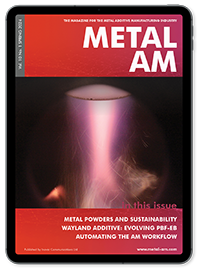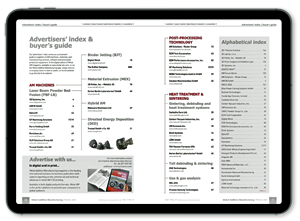Metal Additive Manufacturing: Component design for successful commercial production
With Additive Manufacturing, the next generation of component fabrication technologies has arrived. No other technology, explains Tim Richter, of RSC Engineering GmbH, Germany, has the potential to change the design process and the appearance of new products so fundamentally. In this report for Metal Additive Manufacturing magazine, Richter shares his experiences in designing metal AM components for powder bed fusion based AM systems, explaining both the potential and the limitations of the process [First published in Metal AM Vol. 1 No. 1, Spring 2015] ... Read more »





Join our community